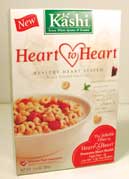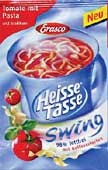The phrase “backed by sound science” is a description applied to a component's or an ingredient's health benefit which is supported by a solid portfolio of research. The research may not yet be strong enough to enable “government-approved” health claims; however, a history of positive results from demographic studies, in vitro (outside a live body) and especially in vivo (inside the body) research helps drive an ingredient's use on an international scale.
Additionally, advances in analytical and processing technology mean a broadening range of very high value-added nutritional and medicinal ingredients can be isolated, for the purpose of being offered commercially. Finally, there are successful, common marketing practices employed by small firms to multi-national corporations. The end result is that certain global trends can be discerned in the use and marketing of nutraceuticals.

Trend #1 - Cutting Edge Categories.
Nutritional ingredients show up most often in seven categories (of consumable products). In no particular order, they are ready-to-eat cereals, health bars, confectionery, dairy, beverages, pet foods, and, of course, dietary supplements. Confectionery products may seem counter-intuitive, but there is a worldwide tendency to fortify gummy and other candy with traditional nutritional components.Examples include the Bristol-Myers Squib's division, Mead Johnson Nutritionals, Evanston, Ind., which recently expanded its Viactiv line (the original chews being a candy-type supplement) into health bars and beverages (energy drink spritzers and fruit smoothies).
In 2002, Japan's Meiji Dairies Corp. introduced a range of dairy products such as its Calbank yogurt drink with casein phosphopeptides to help calcium absorption; a yogurt drink with LG21 lactobacillus beneficial for gut flora; and a lowfat milk product with easy-to-absorb whey protein, amino acids, calcium, and vitamin D3.
Trend #2 - Logos Convey Health Benefits.
Although the FDA regulates label imagery, as it can imply health claims, companies use logos to communicate benefits both in the U.S. and elsewhere.Longer chained omega fatty acids (such as DHA and AA) are thought crucial for brain development, from the fetal stage through the first year or two of life. Mead Johnson Nutritionals' Enfapro formula, a product that contains these ingredients, launched in Indonesia and Singapore last summer; it sported the pictures of an owl and apple to portray its benefit for intelligence. The company's Enfagrow product, introduced in Vietnam, had a logo of a child with books, and a similar product launched last year in Thailand showed an owl with a chalkboard.
Worldwide, a valentine-shaped heart on a label implies a heart-healthy product. Grupo Leche Pascual, Spain, introduced, in 2002, an orange juice and soy drink with a heart-shaped sliced orange on its front panel. It claims to “care for the heart.”
Trend #3 - Multi-nationals Make Trends Global.
Many to most nutritional needs are universal. What is good for an Argentinean is good for a Canadian is good for a Thai. For example, research supports the benefits of omega fatty acids for the skin and fur of animals as well as for human heart health. Nestle's Friskies brand of cat food is often fortified with omegas…whether they are sold in Italy, Indonesia or New Zealand.The Omega-Plus line of dairy-based products sports a flamboyant O in the shape of a heart and is marketed from Greece to Guatemala to Singapore.
The scientific support for such benefits is researched on an international scale. This likely helps multi-nationals feel comfortable about touting certain product benefits.
Trend #4 - Extending Well-founded Benefits.
What's good for the goose is good for the gander…maybe. It is a good marketing practice to try to broaden a product's appeal to a new customer base. The prescription hair-restorer Rogaine, which first was marketed to men, is now marketed to women. The brain-development benefits of omega fatty acids are being touted increasingly in products targeting older children.
And, saw palmetto products are marketed for other male wellness issues such as sexual performance and hair loss.

Trend #5 - Further Ingredient Fractionation.
Many to most commodity agricultural products have been further processed to produce purer, specialty ingredients. Soybeans, once prized for their oil and as a protein-rich meal fed to livestock, now provide foods and dietary supplements with valuable soy protein concentrates, vitamin E, phytosterols and isoflavones.Non-fat powdered milk was first derived from whole milk. Now, the industry offers refined milk proteins in the form of caseinates and whey protein concentrates to isolates. Items that have an even higher value are further refined milk proteins and peptides in the form of lactoferrin, alpha-lactoglobulin or glycomacropeptides.
Atkins Nutritionals, Hauppauge, N.Y., Chocolate Coconut bar, with the tagline “The Original Low Carb Lifestyle,” contains a protein blend that includes soy protein isolate, hydrolyzed collagen, whey protein isolate and calcium/sodium caseinate.
Lactoferrin is used by Sanghiang Perkasa, Jakarta, Indonesia, in its recently introduced strawberry flavored Chil School Growing Up Formula for kids three years and up. The milk-derived ingredients on its statement include skimmed milk, demineralised whey powder, caseinate, and lactoferrin.

Trend #6 - Using Ingredients with a Desired Component.
In lieu of formulating products with expensively refined components, manufacturers will list the composition of a less refined ingredient. For example, Muscletech Research and Development's, Mississauga, Ont., Canada, health bar notes its “full spectrum whey protein fractions include: beta lactoglobulin ~55%, alpha lactalbumin ~15%, glycomacropeptides ~21%, immunoglobulins ~3%, bovine serum albumin ~2%, lactoferrin….”In the U.S. and Canada, lycopene, a carotenoid naturally present in tomatoes, has been limited primarily to dietary supplements. In the rest of the world, tomato-based products—from ketchup to spaghetti sauce—note their lycopene content. For example, Kikkoman, Japan, licensing the Del Monte brand in the Far East, points out its ketchup contains 23mg lycopene per 100g serving.
This tactic allows a company to make a claim for a nutritional component without incurring the cost of purchasing the purified form or dealing with potential regulatory issues (i.e., a less refined ingredient may be GRAS for food use, while a more purified and concentrated component of that ingredient may not be). One benefit to suppliers of purer, isolated ingredient forms is that—in the long run—this strategy helps educate consumers on these ingredient benefits.
Trend #7 - Combining Ingredients for Specific Benefit.
It is common for dietary supplements to be formulated with a selection of ingredients known to benefit the same health condition. This trend is extending to functional foods. For example, Kellogg USA, Battle Creek, Mich., under the Kashi name, offers Heart to Heart Cereal. Besides oat bran, oat fiber and seven grains, the product also contains beneficial antioxidants in the form of grape seed extract and green tea, as well as folic acid.Trend #8 - Expanding to New Applications.
It is logical for ketchup products to lay claim to the benefits of lycopene and for grain or fruit items to tout their innate dietary fiber content. However, as an ingredient's health benefits become more widely known, it begins to be formulated into unrelated products.For example, omega fatty acids are most associated with fish products. However, Munchy Food Industries, Malaysia, launched Three Layers Calcium Crackers with Omega Plus in Singapore. The GNPD describes the product as “chicken BBQ flavoured crackers enriched with omega-3 and omega-6 polyunsaturated fatty acids, proven to reduce cholesterol levels and promote blood circulation.”
This trend is most apparent in the long established vitamins and minerals, which are used broadly in all parts of the world across most categories.
Trend #9 - Declaring Nutraceutical Levels.
Responsible marketers of dietary supplements often will declare the levels of a medicinal or nutritional component in a consumer product, even though not legally required to do so. This is a trend emerging with some foods, also. For example, Australia's Pauls lowfat yogurt, recently launched under the Vaalia brand name, notes the probiotic bacteria strains on the label front, but then also lists L. acidophilus 10,000,000 CFU min; bifidobacterium 100,000,000 CFU min; and Lactobacillus GG 100,000,000 CFU min (“CFU min” represents a minimum of so many Colony Forming Units, or live microbes).Trend #10 - Merging of Nutritional Claims.
It would seem logical that claims made for a nutrient or medicinal ingredient used in a supplement would be the same as when it is used in a food. Often, this has not been the case. However, the more established an ingredient's health benefit, the more the claims made for it are similar—regardless of whether the product is a dietary supplement or food, or the particular country in which the product is marketed.Website Resources
www.NutraSolutions.com— Prepared Foods' supplement publicationwww.npicenter.com— Website with hourly news updates and regulatory sections for nutritional products
www.GNPD.com— Mintel International's website with newly introduced products from around the world
www.PreparedFoods.com/archives/2002/2002_4/0402toc.htm— Prepared Foods' 2002 New Products Annual, with trend information in consumer product categories.
www.charitywire.com/00-01010.htm— Article on Heinz ketchup / lycopene 1998-99 campaign
www.munchy.net— Munchy Food Industries
Many of the product examples in this article were derived from Mintel International's Global New Products Database, www.gnpd.com, 312-932-0400.

Sidebar: Going Global
The use of imagery to commute a health benefit (Trend #2), can be seen in an orange juice and soy based drink (Zumo de Naranja y Soya) under the Pascual brand from Grupo Leche Pascual, Spain.

 Claudia Dziuk O'Donnell is Chief Editor and Associate Publisher of Prepared Foods magazine including its NutraSolutions and Culinary sections. Her responsibilities include determining the editorial content of the print publication and the New Products Conference.
Claudia Dziuk O'Donnell is Chief Editor and Associate Publisher of Prepared Foods magazine including its NutraSolutions and Culinary sections. Her responsibilities include determining the editorial content of the print publication and the New Products Conference.